Comment:
The portal changes (including the bile ductular
proliferation, the pattern of portal-based bridging fibrosis and the
predominantly neutrophilic infiltrate) are all strongly suggestive of a process
of biliary obstruction. We note that the cholangiogram is reportedly normal.
Nonetheless, because the histology has such strong obstructive features, the
cholangiogram should be carefully reviewed to exclude a subtle obstruction such
as due, for example, Klatskin's-type bile duct carcinoma. A cholestatic drug
reaction is a less likely possibility.
Previous Biopsies on this Patient:
None
TPIS Related Resources:
Liver
Transplant Topics
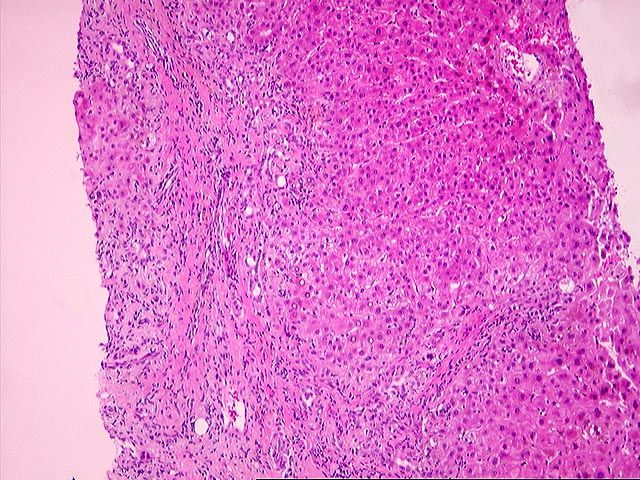
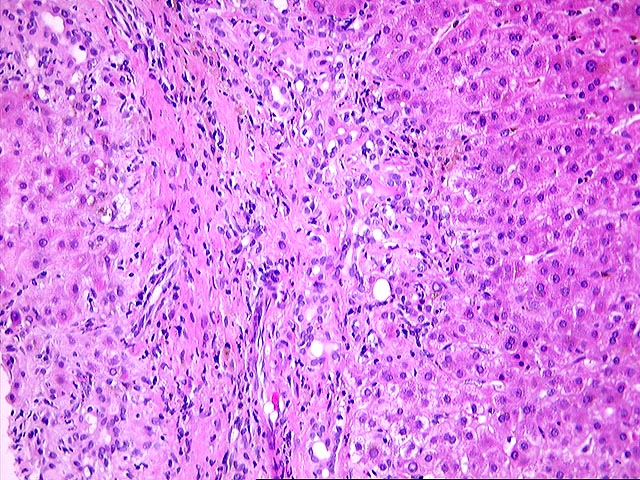
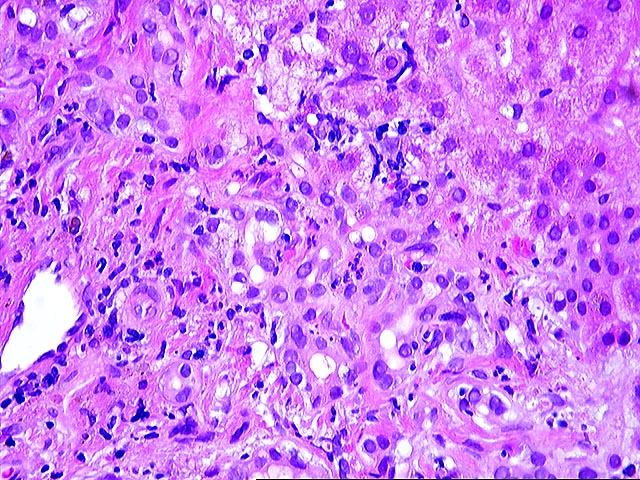
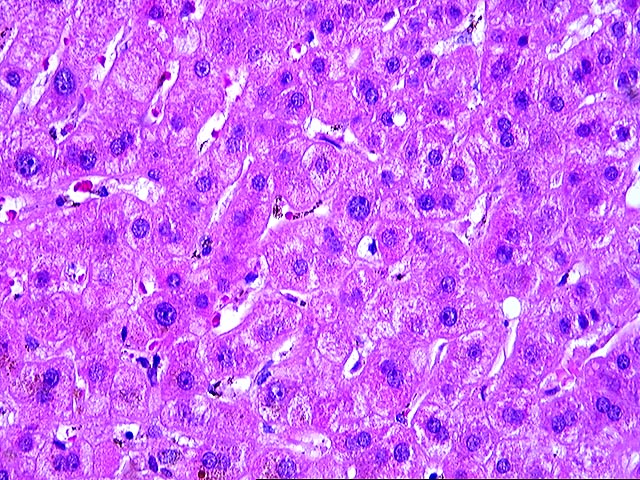
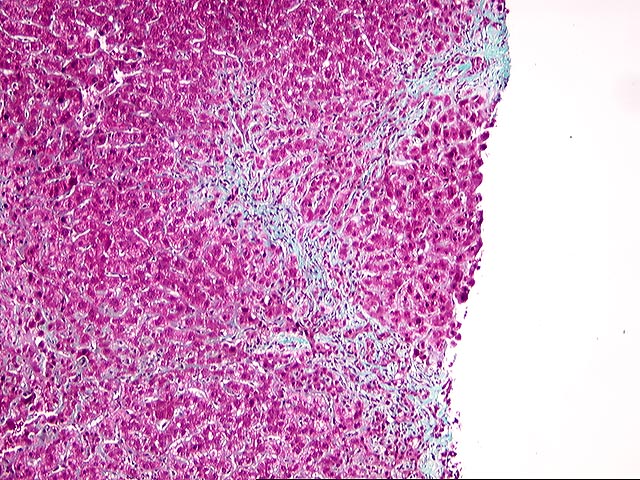
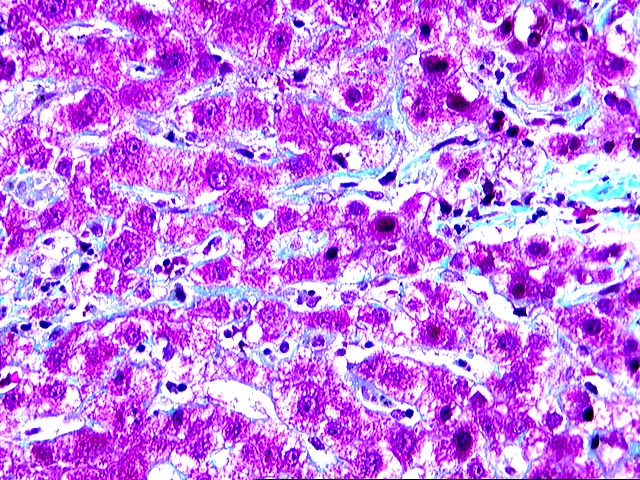


The liver biopsy shows expanded portal tracts with early formation of the portal-portal fibrous bridges. The tracts uniformly demonstrate prominent bile ductular proliferation particularly along the edges of the tracts. This is associated with a mixed inflammatory infiltrate that is rich in neutrophils and contains scattered eosinophil and mononuclear cells. Intralobular bile ducts are intact and occasionally show reactive epithelial changes and hyperplasia. The lobules demonstrate nuclear irregularity, together with mild canalicular cholestasis which is associated with a minor inflammatory component. Occasionally glycogenated nuclei are also seen.
The changes in the biopsy are strongly suggested of biliary obstruction. Although a cholestatic drug reaction is a less likely possibility, the cholangiogram should be reviewed to insure that low grade obstruction is not present.